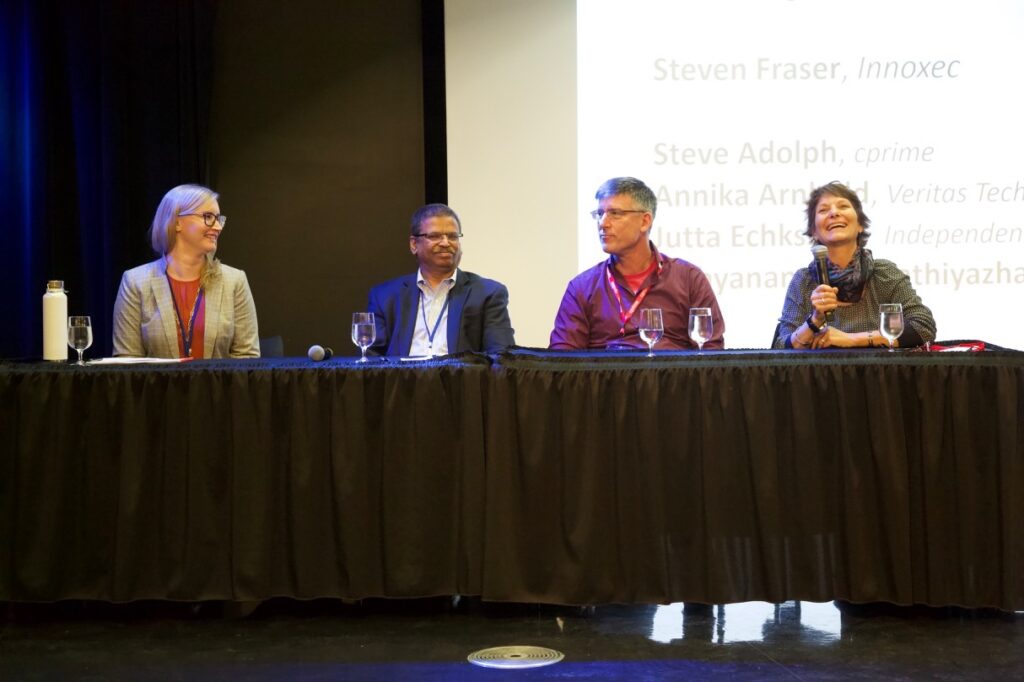
I just got back from a week inMontreal where I had the opportunity to actively participate in XP2019, the Agile Alliance’s 20th International Conference on Agile Software Development (http://www.xp2019.org), co-chairing the experience report track with Rebecca Wirfs-Brock and filling in as the Leadership symposium chair. XP2019 describes itself as a forum where Agile researchers, practitioners, thought leaders, coaches, and trainers get together to present and discuss their most recent innovations, research results, experiences, concerns, and challenges, and debate the latest trends. It’s a small and intimate conference where both practitioners and researchers are able to look beyond “the edge”. In keeping with this billing, and with it being nearly 20 years since the fabled Snowbird meeting, the theme for this conference was “Agile – The Next 20 years”.
With the growing awareness of “business agility”, one question raised was “is business agility the future of the agile movement?” There is no shortage of pundits now pitching “business agility” and, in this age of disruption, only the agile will survive – so clearly it’s time for agility to move beyond the data center to across the enterprise. I was able to “officially” contribute my point of view as a panelist on the Business Agility panel. From my perspective, the thought that somehow the agile software community is leading business to a bright “business agility” future is somewhat strange because, in my humble opinion, agility was a well known business competition strategy long before the famed skiing vacation at Snowbird.
We in the agile software development community can be a little myopic, only seeing the world through the lens of the Agile Manifesto. Agility as a business strategy is an old concept – perhaps a century old, perhaps even older. One only has to do a little research to find many writers and business thought leaders, such as Stalk and Thomas – Competing Against Time , Verne Harnish’s Rockefeller Habits, Chet Richard’s Certain to Win, and of course Jim Collin’s Good to Great all describing agility as a business success strategy in the mid 80s and even earlier. My favourite definition of agility comes from Colonel John Boyd who, in the 1950s, developed the so called Observe-Orient-Decide-Act (OODA) model [https://en.wikipedia.org/wiki/OODA_loop]. To paraphrase Colonel Boyd, agility is “learning faster than your competitors and/or the rate of change”. Lovely, simple, succinct. It does not take a manifesto of software development, or much imagination, to know what happens if you are learning slower than your competitors or slower than the rate of change. This definition moves agility from an inward software-centric focus of “…better ways of developing software…” to a focus on business outcomes – business success. The corporate landscape is littered with marquee companies who learned more slowly than the rate of change or their competitors. I am willing to wager some of those failed companies even had agile software teams – anyone remember Nokia? In the age of digital disruption it would seem that business agility is certainly a concept whose time has come.
However, I am ambivalent about the term “business agility”. For better or worse, we in the software community appropriated the term “agile” without fully acknowledging agile history. There is much we can learn from others and from history. Optimistically, I hope the term “business agility” will be the solvent that finally dissolves the artificial barrier between “the business” and “IT” because, the last time I looked, IT is part of the business and not some bag on the side. This artificial barrier not only delays the ability for the business to bring new products and services to market – think a bank wanting to offer a new kind of bank account or loan service – but also delays validating the business hypothesis of that product or service. We only learn if the product or service is valuable when it finally goes into service. This artificial barrier slows the build-measure-learn cycle. I am excited by the possibility of large enterprises becoming more nimble and able to respond faster to their customers needs and changing market dynamics. Business agility could create powerful teams that can exploit all of an organisation’s capabilities to quickly learn and validate a new business hypothesis. IT is no longer a cost center, but rather a strategic part of the business.
My greatest concern is that “business agility” will become a sales mantra to bring a myopic manifesto to the business. “Business agility” will be used to sell certification courses beyond the software teams, such as Scrum for HR, Product Owner training for marketing, “agile” accounting for CAs and CPAs. People will be able to add additional two and three letter designations to their e-mail signatures. Retiring project managers will have a second career as certified agile business coaches. Organizations will prefix their operations with “agile” and someone will claim to have a magic recipe that turns a company into a fast moving agile business. We’ve seen this movie before and it does not end well.
Two underlying themes emerged at XP2019… Has agile been commodified and gone off the rails? Is there a future for agile as we currently know it? These are juicy topics for future posts. For now, we need to focus on taking a pragmatic approach and recognizing that “agile” has a rich history and encompasses a wide range of ideas, and is continuing to evolve. There is no “one size fits all” solution. We need to help companies identify what they need to learn and understand in order to grow into more profitable and sustainable enterprises. Our pursuit of “business agility” is just beginning and there is a lot for us learn.
